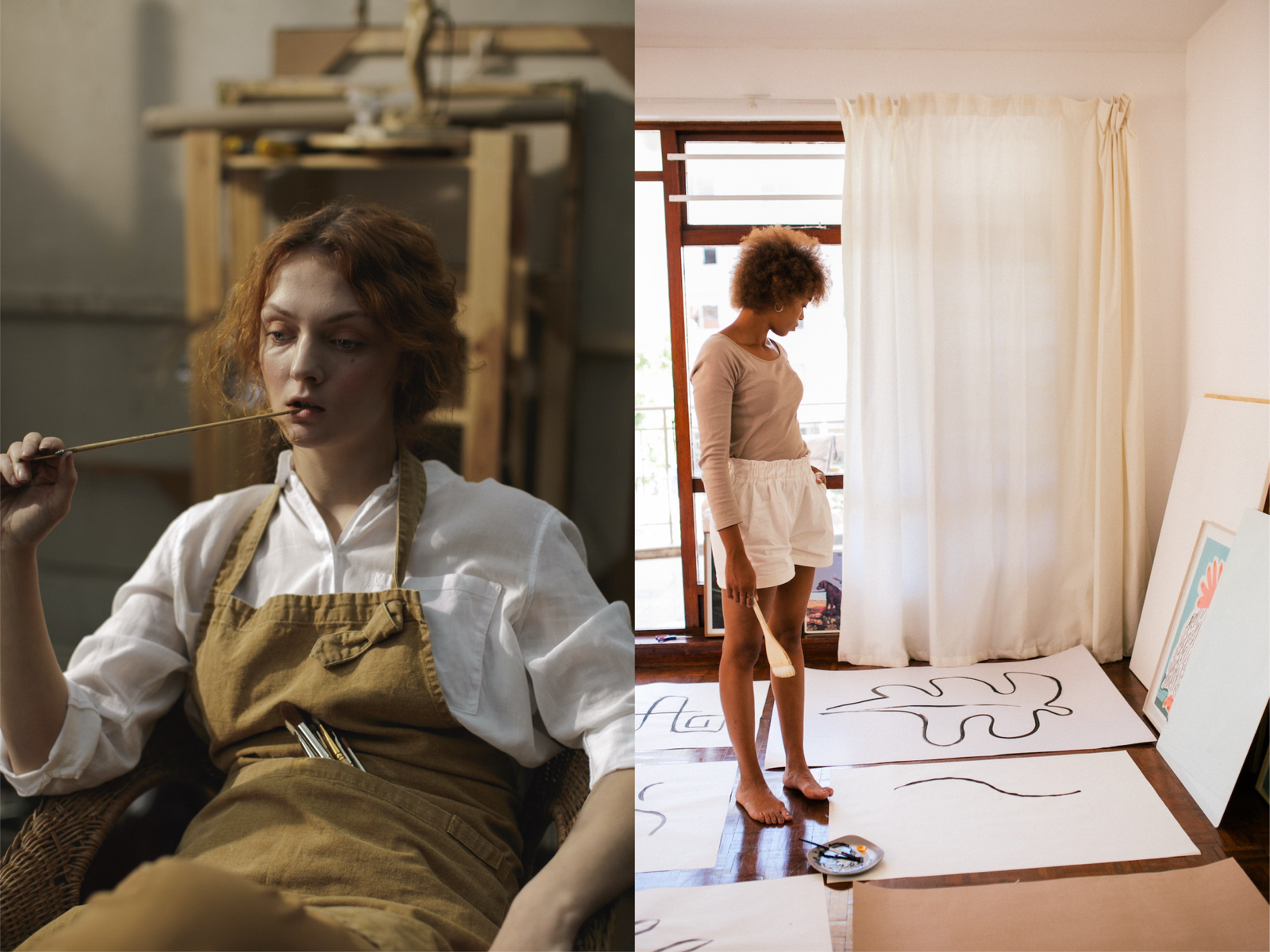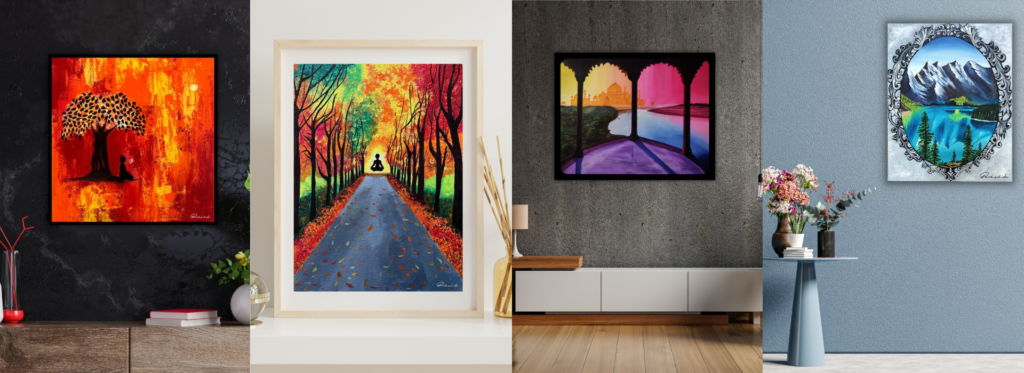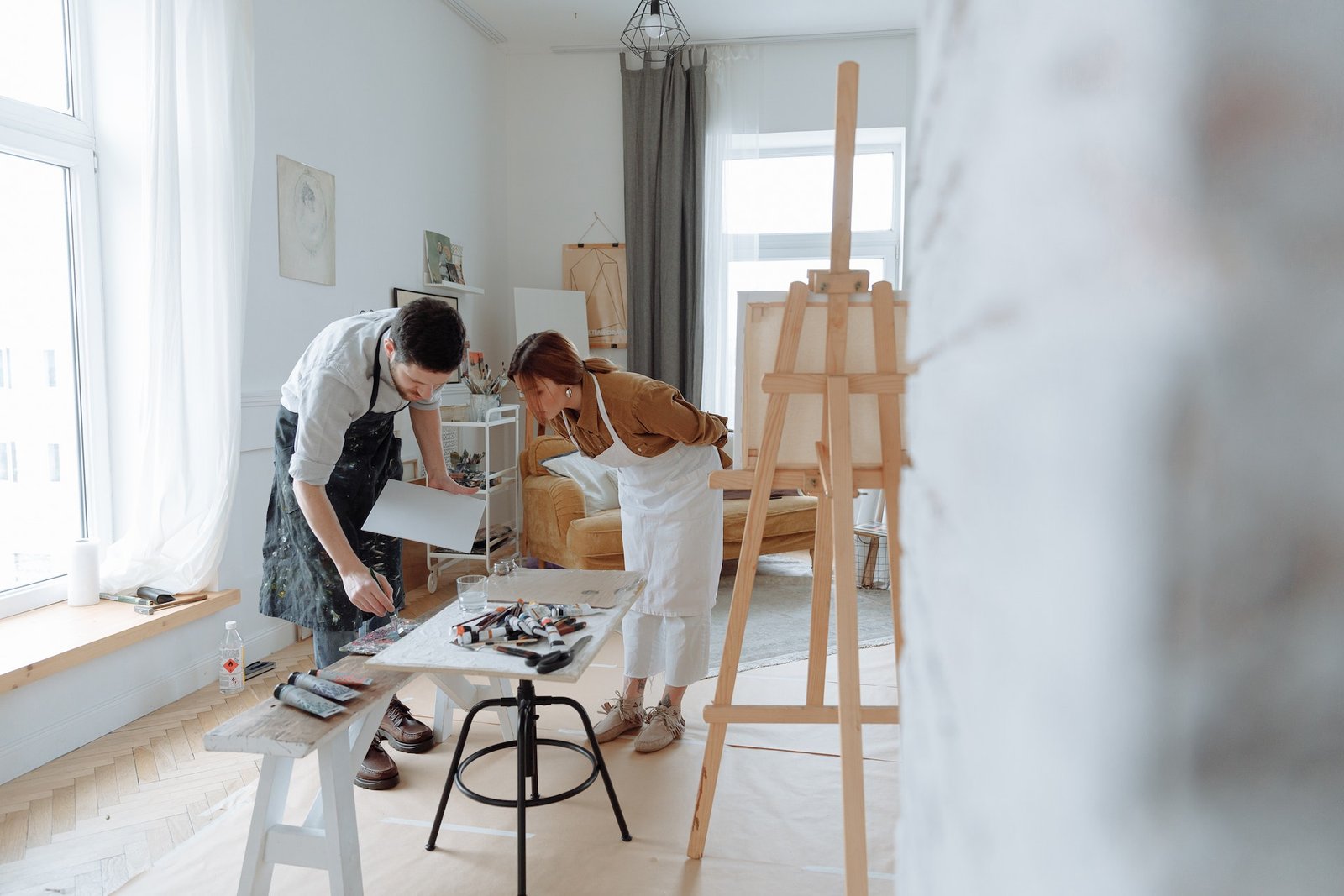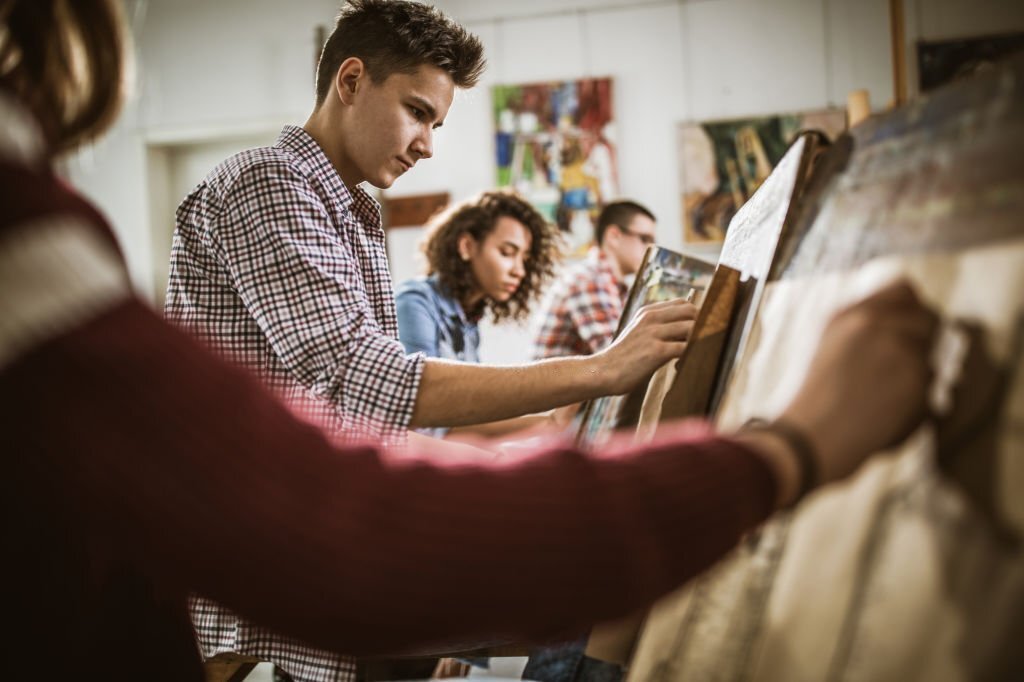Professional artist means a person who is critically recognized as an artist, who possesses skill, training and/or experience in an artistic discipline, and who is active in and committed to his or her art practice.
A PROFESSIONAL ARTIST is more than a state of mind or a choice. Instead of merely focusing on how to create your own art, you must implement it and build knowledge, skills, and competences relevant to the art industry.
Hence, being a professional artist also involves
- Business training and skills related to making a living from your activity.
- Character traits and habits – which means you will keep working toward your goal.
- Desire, dedication and commitment – to maintain your career in the face of challenge and lack of earnings.
Lets explore the points on How to become a professional artist – A Beginner’s Guide to help you kickstart your art as a career.
1. Build a portfolio.

A crucial first step on the road to becoming a professional artist is to always have a collection of your greatest work available.
Having a portfolio ready not only allows you to demonstrate your artistic abilities accurately, but it also allows you to identify your strengths and shortcomings as you progress, which will be helpful in the long term.
Let’s check out how to create a strong portfolio now –
- Organize Examples Effectively – Keeping a consistent theme helps the viewer understand your work’s narrative better and focus on your skillset.
- Quality Over Quantity – While it is good to have many examples, you should take care that the pieces presented are of the best quality that you can reproduce. After all — a portfolio is often the first impression someone will have of your work.
- Ask For Other Perspectives – The process of creating an art portfolio can lock you in a subjective box, where your judgment may become clouded. That is why asking for an outside perspective throughout the creation process is a good choice for both you and your future portfolio.
- Showcase Both Your Style and Your Technical Ability – Technical skills are what allow an artist to communicate the message or meaning of a piece. However, the style is how they convey the message. Hence, both are equally important when choosing what you should put in your portfolio.
2. Establish your type of art & Value your worth.

What kind of art do you make? What are its visual characteristics? In what ways is it similar to the art of other people? How would you categorize it? Who is interested in that type of art?
Answering all these questions will help you understand the target audience and market for your work.
- Value your time – We can so easily become engrossed in the creative process that we forget how much time actually costs. It’s important to have self-respect and to appreciate the value of your time. Nobody will respect your time if you don’t.
- Set your own prices – As an artist, it is important to be aware of your own worth as a human being and as an artist. This means knowing how to set your own prices in order to be compensated fairly for your work. Many artists undervalue their work, which can result in them being underpaid or even taken advantage of by unscrupulous buyers. Check this guide on How to price your paintings effectively.
- Build up your own confidence – Confidence is key when it comes to being a successful artist. If you don’t believe in your own talent, skills, and abilities, it will be difficult to convince others of your worth.
- Remember that people pay for what they value – Especially in light of the past years of government restrictions and pandemic interruptions, people are recognizing the value of the arts.
3. Build a website.

Create an easy-to-use but polished website using that expertly photographed initial body of work.
Websites are today’s equivalent of the portfolio. Online presence is a must, in my opinion, if you want to compete.
The website can now be really basic, with only your name, some information about you, your job, and contact details.
Using a website construction template from a website like SquareSpace.com, Weebly.com, or Wix.com, you can create a straightforward website. Numerous websites provide basic template-free versions for free. Check out my art website artsfiesta.com to get some inspiration.
While initially it is OK, you will soon need to upgrade. While you’re doing it, you ought to think about establishing a presence on particular social media platforms.
Keep it simple; choose a few that interest you, then create an account.
4. Explore a few development opportunities.

An artist should not just focus on making art. Looking for opportunities to develop art for some organizations or spreading awareness about it.
The most common additional activity is teaching. This can be
- Either in the formal sense of working for an art college or school.
- Or delivering your own programme of workshops from suitable premises or via painting holidays etc.
- It also offers the opportunity to be with other people rather than always working on your own.
Once you have figured out these aspects, you can start exploring the possible audience and then —
5. Determine Your Market

What kind of art would you sell? Will it be on a national, global, or maybe digital scale? Who are the people who produce this art, and who is their main target market? This can be done by –
- Discover Which Artists Make Art Similar to Yours – Online research or in-person observation of their work are both viable options for doing this. Pay close attention to artists whose careers resemble yours in terms of accomplishments, résumés, styles, target markets, etc.
- See How Much These Artists Charge For Their Art – When determining whether your pricing should be higher or lower, it can be advantageous to compare them to what others are charging. You might need to reconsider your pricing if your artwork ends up being more expensive than what other local artists in your area charge for comparable works.
6. Learn to promote your work.

You should customise your marketing strategy using the information you learned from analysing the market, competition, and potential audiences.
- Build and Maintain Your Community Presence
The crucial question an artist should ask themselves before sitting down to create a marketing and community presence is — what do I want people to see as my signature trait?
It can range from your art style to witty descriptions of your images — and that should be present wherever you are, from social media to an exhibition in a gallery.
Once you know what that will be, you are ready to get started.
- Content will always matter the most
Whatever you post, this should always be your defining characteristic. This is crucial for both the content you choose to share on your platform and the stuff you produce yourself.
- SEO (Search Engine Optimization) is Important
In terms of online presence, to achieve a high SEO rating, your postings must include keywords that will appeal to both your target audience and the algorithm.
If you’re serious about boosting your online visibility, create a comprehensive content strategy a week in advance so you can be ready for whatever the day may bring, regardless of the platform.
To reach the largest possible percentage of the target audience, you may, for instance, optimise your artist statement in accordance with the preferences of the search algorithm.
7. Be Where Your Clients Are

It takes more than a website to establish a presence in the community. It would be beneficial for this if you were in the same social circles as your clients. Following are the most important steps you could take towards the same –
- Set up social media pages where your target audience/clients are. Go on every social media sites like Instagram, Facebook Business, Pinterest etc. You should get your business handle ASAP!
- Engage with the clients and followers in a meaningful way.
- Follow, share, and respond to both potential buyers and fellow artists.
- Attend relevant art exhibitions or maybe present your piece there.
- Follow art news and keep up with the trends.
- Get involved in the network of professional artists.
- Write art blogs for more reach and understanding.
8. Earn a living as a professional artist.

- Create a business plan – Take into consideration all the ways that you can potentially sell your art, as well as the prices you have determined for the various types of pieces you create.
Then, outline in your business plan how many pieces you need to produce and sell to meet your financial needs, and how you are going to go about doing so.
- Sell your work in stores, galleries, or online – While retail stores and galleries take a percentage of your sales, selling your art through such companies is a great way to expose your work to a larger audience and, hopefully, make more sales.
You can also sell your artwork online on already existing retail shop like Etsy, Amazon Handmade, Artfire, etc. or add the shop option to your own website.
- Create commission pieces – Wherever you display your art, advertise that you are also available to create original pieces for individual clients on commission. Most artists create commission pieces at some point in their careers.
Working on commission may not be as steady or artistically fulfilling as following your own inspirations, but it can be a great way to get your art out into the world while making some money.
There are many paths on how to become a professional artist because every artist (…every person) is unique. But you can use this information as a general template or a beginner’s guide to help you get going in the right direction and discover your individual track.




This is helpful!